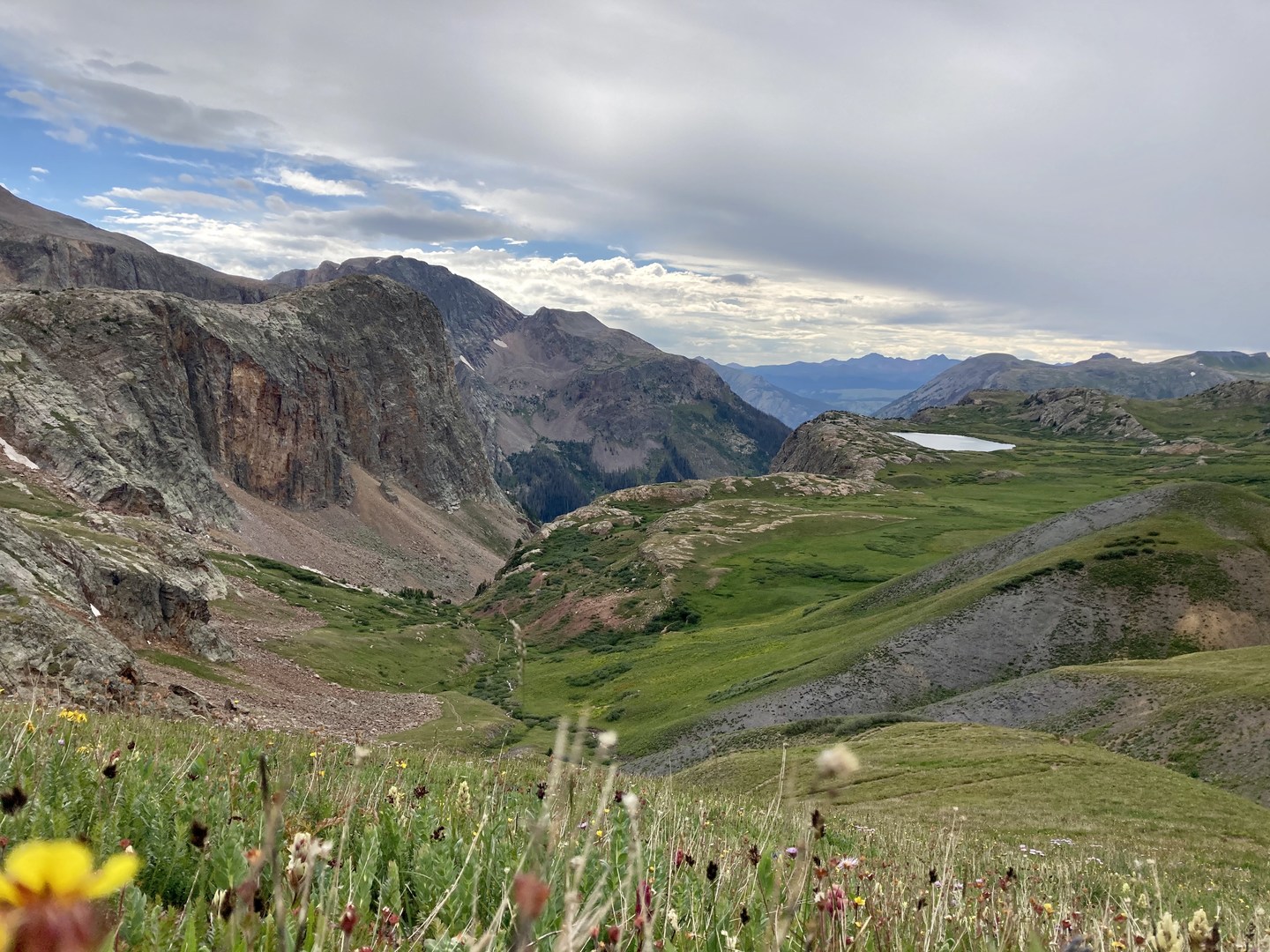You are here
Completed in 1987, the Colorado Trail stretches 485 magnificent miles from Denver to Durango. Along the way it meanders through high alpine mountains and valleys, offering a glimpse at some of the finest terrain Colorado has to offer. It traverses eight mountain ranges, six wilderness areas and stays above 10,000’ for the majority of the trail. Highlights include the Collegiate Range, where multiple 14ers are just off trail and can easily be climbed, and the San Juans, where the trail remains above tree line for days at a time and climbs to elevations of over 13,000’. There is also abundant wildlife along the Colorado Trail, ranging in size from small pika and marmot, to bear and moose.
The trail is divided into 28 different segments, each beginning at a trailhead accessible by vehicle. This accessibility is what makes the Colorado Trail special. Day hikers and section hikers can easily find their way to new segments of trail, while thru hikers can still enjoy a wild and rugged four to six week journey. Below is a description of Colorado Trail Segment 24.
Colorado Trail Segment 24
Stony Pass Trailhead to Molas Pass
Segment 24 begins at Stony Pass Trailhead where you’ll need a 4WD vehicle to reach. The trail remains high and exposed as it makes a few small climbs, and passes by a few tiny lakes. Eventually you’ll come to the Colorado Trail/Continental Divide Trail junction. Southbound thru-hikers have been following the CDT since before Breckenridge, therefore this junction is quite significant. From here the CT turns west, while the CDT continues heading south to Mexico.
From this junction there is one last small climb. At the top of the climb you’ll be rewarded with stunning views of Elk Creek Canyon, as well as a few nearby lakes above. The trail then descends an impressive series of switchbacks to the canyon below. Along the way you’ll pass an old mineshaft and encounter some steep and impressive terrain. In fact this entire canyon is very rugged and impressive.
The trail then follows Elk Creek down through the canyon. Along the way you’ll have a few stunning views of Vestal and Arrow Peaks, two iconic mountains in the Grenadier Range just to the south. You’ll also encounter several patches of avalanche debris blocking the trail. Although work is in progress to clear the debris, it could take years due to the magnitude of the avalanche and debris coverage. Be prepared for these few short stretches where you’ll be following a worn, but very rough, path through downed timber.
As you work your way through the canyon enjoy the cool cover of the forest, something that hasn’t been experienced for quite a few miles. The trail eventually comes to and crosses some railroad tracks and the beautiful Animas River. It then switchbacks steeply up and out of the canyon. You’ll soon come to a trail junction that leads to Molas Lake Campground. Some hikers choose to mail themselves a resupply package here.
If continuing on, it is only a short distance to Molas Pass and Highway 550. The charming town of Silverton is seven miles to the north and is frequented by thru-hikers looking to resupply and rest. Molas Pass also marks the end of segment 24.











Comments
Sign In and share them.